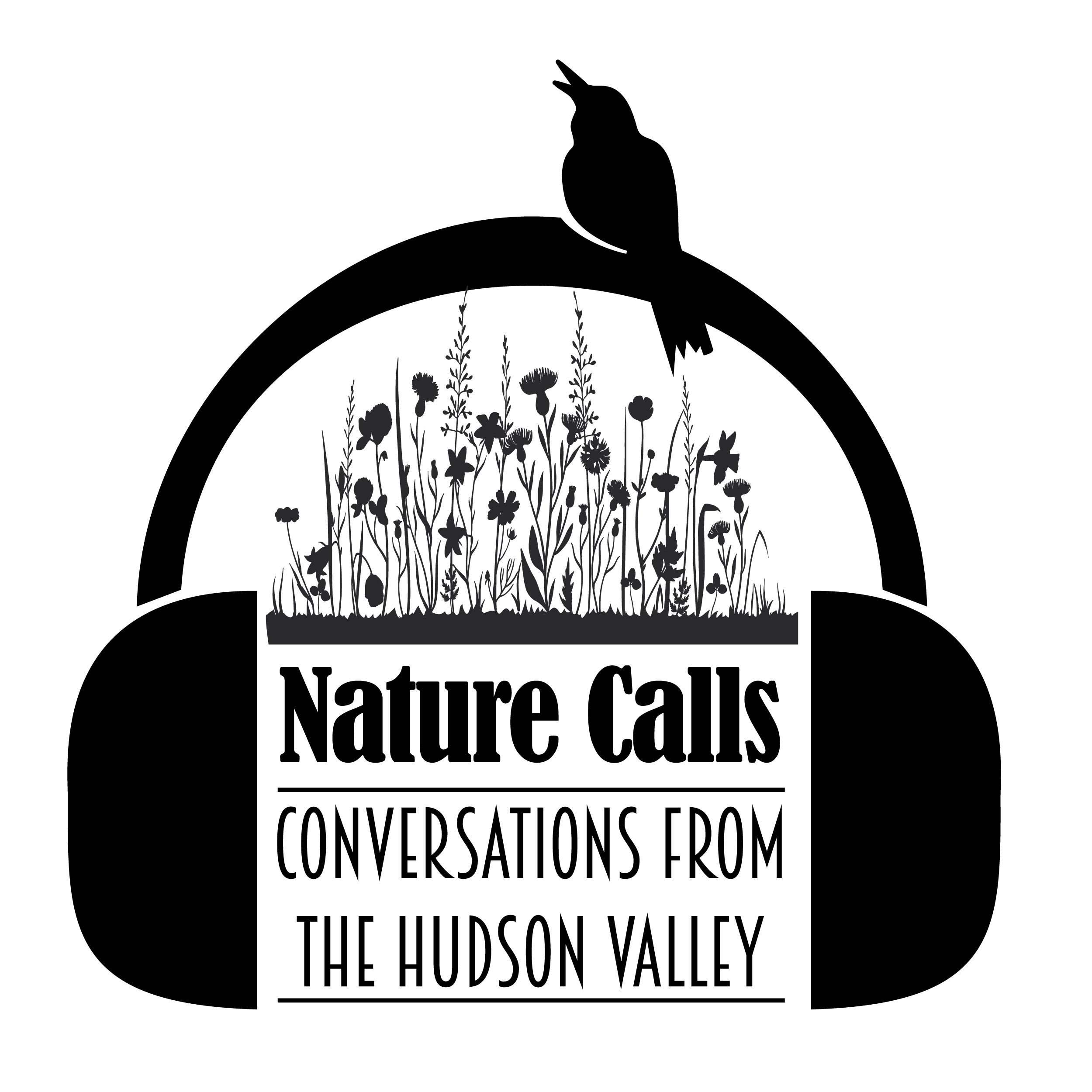Episodes
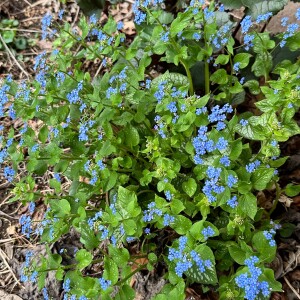
Thursday Jun 26, 2025
Episode 179: Made in the Shade Retrospective
Thursday Jun 26, 2025
Thursday Jun 26, 2025
Master Gardener Volunteer for Cornell Cooperative Extension in Ulster County, Barbara Bravo, joins the Nature Calls: Conversations from the Hudson Valley podcast to provide some guidance and ideas. This collection of four previously aired Made in the Shade short segments has been consolidated into a single episode that focuses entirely on shade gardening.
The first segment discusses the differences between light shade, partial share and deep shade, some of the advantages of shade gardening, and things to consider when selecting appropriate plants for your garden.
Next, learn about Barbara's recommendations for drought-tolerant plants that thrive in dry shade. They are a game-changer for those struggling to cultivate their gardens. Epimedium, brunnera, liriope, hellebores and carex are all options that may work for you.
The third segment focuses on the wide range of options available to add some height to a New York shade garden which usually consist of low-growing plants. But structure and interest can be added with a number of shade tolerant plants such as flowering quince, giant fleece flower and goat’s beard. Ninebark is one of Barbara's favorites. Typically known as a medium shrub native to the eastern and central United States, there are ninebark cultivars that do well in shade. In addition to being a pollinator favorite, most varieties are drought tolerant too.
This episode concludes with a segment on how to add contrast and texture to a summer shade garden. By incorporating plants like Ligularia ‘Britt Marie Crawford’, Hakonechloa macra ‘All Gold’, Athyrium niponicum, Dryopteris Ferns and others, your shade garden doesn’t have to be ‘boring’. Keep it going into the fall with Colchicum autumnale ‘Pleniflorum’ a/k/a Autumn Crocus, or Asarum Europa a/k/a European wild ginger. Listen to the possibilities!
These tips can help you make a shade garden the focal point of your landscape.
Host: Jean Thomas
Guest: Barbara Bravo
Photo by: Teresa Golden
Production Support: Linda Aydlett, Deven Connelly, Teresa Golden, Tim Kennelty, Amy Meadow, Xandra Powers, Annie Scibienski, Jean Thomas
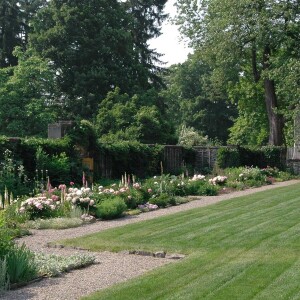
Thursday Jun 19, 2025
Episode 178: Joe Behn is Back
Thursday Jun 19, 2025
Thursday Jun 19, 2025
In this episode, Master Gardener Volunteers Jean and Tim chat with Joe Behn of Behn's Best Perennials in Malden Bridge, NY. Joe has been our guest multiple times before, on episodes 9, 65 and 66. On these prior occasions, we delved into the world of perennials, as Joe is a respected wholesaler of perennials to the landscaping world. This time, we spoke to him during his winter hiatus and he described his life as being “me in my pajamas, accompanied by the dogs".
For a change of perspective, Joe was asked to provide a topic other than growing and/or selecting perennials. He suggested talking about a style of gardening that goes in and out of style... making garden rooms. This is an almost inevitable response to the ever-present challenge of deer. Joe explained that the core idea of garden rooms was making walls and fences around “rooms” where deer could not penetrate. This would make it possible to garden with plants the deer would usually wipe out in one visit. Hardscaping was one focus of a wide-ranging conversation, with ideas flying fast and furious. Joe has strong opinions about the idea that a fence should be beautiful on both sides as well as impermeable to deer and other freeloaders.The conversation then ranged from plant selection, to space demands of a smaller garden, to the value of hardscaping for simplifying maintenance. And, as usual, Jean and Tim had many questions for Joe about their own gardens and plant shopping. Enjoy!
Hosts: Tim Kennelty and Jean Thomas
Guest: Joe Behn
Photo by: National Park Service
Production Support: Linda Aydlett, Deven Connelly, Teresa Golden, Tim Kennelty, Amy Meadow, Xandra Powers, Annie Scibienski, Jean Thomas
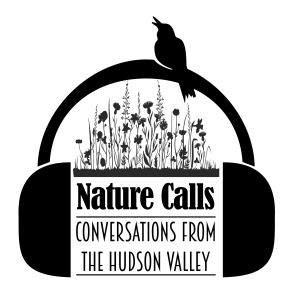
Thursday Jun 12, 2025
Episode 177: Landscape Architecture
Thursday Jun 12, 2025
Thursday Jun 12, 2025
In this episode, Jamie Purinton chats with Tim and Jean about some of the finer points of being a landscape architect. A landscape architect is more than a designer. To be a licensed RLA (registered landscape architect), there is an intense educational requirement followed by a lengthy internship, and culminating a three-day exam! This is because the landscape architect must be expert in engineering aspects of structures, grading, drainage and topology as well as all the design skills and plant expertise found in a landscape designer. In fact, she considers the plants to be “icing on the cake.”
As you might expect, the size of the projects she is involved in can be pretty big. And so can the size of the issues she must address. Public health and environment must be considered, as well as future consequences of climate change. She has worked on many public gardens and waterfront projects, and closer to home, the Mountain Top Arboretum.
The Mountain Top projects spanned several years and included work with partnerships with many of our former guests on the podcast (episode list below). Some of her favorite projects included building a bird-attracting garden and an amphitheater, with a prevailing emphasis on native plants. She states that of the many facets of her job, she has no particular favorite because it is the “pulling it together” that gives her the most satisfaction.
She advises her clients to step away from a rush to manipulate the landscape, and observe what is already there. She says the High Line in New York City is an influence on many people,. There is growing appreciation of habitat among her clients, even to the point where she is planning to shift her work emphasis from larger “public” projects to individuals.
Her two books express her philosophy well. “The Voices of the Land” is a collection of essays, and “Landscape Narratives: Design Practices for Telling Stories,” with M. Poettinger. The latter has become a respected textbook. So if you're curious about how large scale projects can be carried out with minimal intrusion to the environment and ecology, join Tim and Jean and listen in to this episode.
Hosts: Tim Kennelty and Jean Thomas
Guest: Jamie Purinton, RLA
Production Support: Linda Aydlett, Deven Connelly, Teresa Golden,Tim Kennelty, Amy Meadow, Xandra Powers,Jean Thomas
Resources
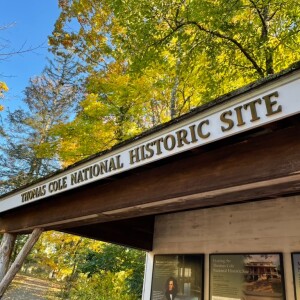
Monday Jun 09, 2025
Episode 176: Thomas Cole Historic Site
Monday Jun 09, 2025
Monday Jun 09, 2025
The Thomas Cole National Historic Site is a National Historic Landmark that includes the former home, also known as Cedar Grove, and the studio of painter Thomas Cole, founder of the Hudson River School of American painting. Located in the village of Catskill, NY, Thomas Cole lived and worked there between 1833 until his death in 1848. In 1965, the property was declared a National Historic Landmark and designated a National Historic Site in 1999. It is also considered an affiliated area of the National Park Service.
Cedar Grove, a Federal Era house, was restored and opened to the public in 2001. Aided by historical photographs, sketches, and a painting, Cole's 'New Studio', originally built in 1846 and demolished in 1973, was reconstructed and reopened to the public in 2016. It currently is used for traveling exhibitions that change periodically. The house and the studio are open for tours, events and workshops throughout the year. Three years later, in partnership with the Olana State Historic Site and the New York State Bridge Authority, the Hudson River Skywalk was opened, creating a pedestrian walkway across the Rip Van Winkle Bridge connecting Olana with the Thomas Cole Historic Site. There is also the Mawignack Preserve, a park along the Catskill Creek that is operated by the Greene Land Trust, which contains signage about Thomas Cole as it was one of his favorite places to paint.
This was all possible through a dedicated team of volunteers led by Elizabeth Jacks, an Executive director of the site for over two decades. She joins the Nature Calls: Conversations from the Hudson Valley to talk about how the site’s history and how it has evolved thanks to the many partnerships that have been formed over time. During her tenure, Betsy expanded the campus from one building to six and grew the organization's operating budget tenfold. She emphasizes that historic sites are actually for the living, to help us all better understand the past and how history has helped to shape how we see the world today.
Hosts: Annie Scibienski and Taly Hahn
Guest: Elizabeth Jacks
Photo by: Teresa Golden
Production Support: Linda Aydlett, Deven Connelly, Teresa Golden, Taly Hahn, Tim Kennelty, Amy Meadow, Xandra Powers, Annie Scibienski, Robin Smith, Jean Thomas
Thursday May 29, 2025
Episode 175: Columbia Land Conservancy Update
Thursday May 29, 2025
Thursday May 29, 2025
In this episode, co-hosts Annie Scibienski and Taly Louria welcome back Troy Weldy, president of the Columbia Land Conservancy, to give an update on a few of the exciting projects the Conservancy has been up to lately.
First up, recently launched 'Let's Go CoCo' is a website with a wealth of information dedicated to helping people find places in Columbia County to connect with nature. It includes not only the recreational land tracts under the Conservancy's auspices but also an extensive list of all public lands available for recreation in Columbia County. A directory and print map lists every public site and lets you search and filter available places based on your criteria - where are good places to swim, fish or picnic, which have ADA-accessible trails, where you can bring your dog, and much more. There’s also a blog with seasonal tips for getting outside, how to enjoy nature safely and be respectful of the land, and offers ways to volunteer.
Another exciting project in the works is the Taghkanic Headwaters Conservation Plan, a major land project designed to protect over 500 acres in the Taghkanic Headwaters. The land that the Conservancy is working to protect is a beautiful, ecologically important piece of forest that supports wildlife, clean water, and even the City of Hudson’s drinking supply. But the Taghkanic Headwaters conservation project isn’t just about setting land aside, it's also about how communities can come together to shape how public land is used and cared for. One of the most exciting things about this project is the vision behind it: the creation of a community forest.The concept is pretty simple: instead of one organization making all the rules the people who actually walk the trails, fish the pond, or picnic with their kids, help make decisions about how the land is used and cared for. It’s a more collaborative, inclusive approach to conservation, and it’s something the Conservancy hopes to model for future projects.
Troy also shares news about other local efforts: building a trail from downtown Hudson to the Greenport Conservation Area, improving public access to green space, and working with towns across Columbia County to develop a Countywide Conservation Plan that identifies and protects the places that matter most. Whether you're a gardener, hiker, nature lover, or just curious about local conservation efforts, this episode gives a hopeful look at how we can all play a part in caring for the places we love.
Hosts: Annie Scibienski and Taly Louria
Guest: Troy Weldy
Resources
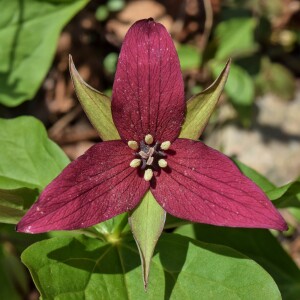
Thursday May 22, 2025
Episode 174: Native Landscape Design
Thursday May 22, 2025
Thursday May 22, 2025
In this episode, Kate Brittenham—an ecological landscape designer—chats with Tim and Jean about how native plant gardens can be both beautiful and practical. These kinds of landscapes do more than just look good—they support local biodiversity and give homeowners a sustainable alternative to the typical lawn. Kate grew up surrounded by native plants at Flying Trillium Gardens and Preserve, a special place in the southern Catskills created by her mother, Carolyn Summers. She shares how her design approach has shifted over time: from having to educate clients about the benefits of native plants to now working with folks who are already excited about creating ecological gardens. Kate also talks about how to strike the right balance between habitat and curb appeal, especially in suburban neighborhoods or places with HOA rules.
Kate also talks about how things have really changed in recent years—more people are paying attention to pollinators, invasive plants, along with an increasing awareness of the downsides of keeping a traditional lawn. Since the pandemic, she’s seen a real shift in what clients are asking for, and it’s changed how she approaches her work. She shares practical advice for anyone looking to make their yard more habitat-friendly, from choosing the right native plants to dealing with invasives and designing with the local environment in mind. The conversation also dives into the updated edition of Designing Gardens with Flora of the American East, the book she co-wrote with her mom, Carolyn Summers. Kate brings a great mix of honesty, plant knowledge, and optimism to the conversation—something gardeners of all experience levels will really enjoy.
So if you're thinking about ditching some of your lawn or just want to learn more about plants that support pollinators, listen in as Kate Brittenham shares smart, approachable advice to help you take that first step!
Hosts: Tim Kennelty and Jean Thomas
Guest: Kate Brittenham
Image: The Cosmonaut CC BY-SA 2.5 CA
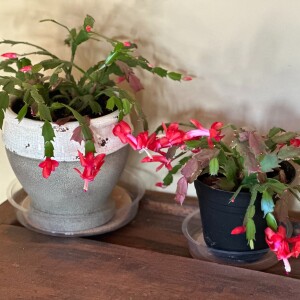
Thursday May 15, 2025
Episode 173: Flower Power Retrospective (Part 3)
Thursday May 15, 2025
Thursday May 15, 2025
Linda Levitt, Master Gardener Volunteer, rejoins Nature Calls: Conversations from the Hudson Valley with Flower Power Retrospective (Part 3) . In this episode you'll hear two previously aired short segments about flowers that have been compiled together for easier listening.
In the first segment, Linda discusses how to grow popular fall flowers that include Mums, Asters and Montauk Daisies. Including these beautiful plants in your flower gardens will bring lots of fall color to your landscape. Chrysanthemums are a large genus in the Asteraceae (daisy) family. The plants can grow 2-4 feet tall with blooms that are white, yellow, or pink in the wild species, but also come in multiple cultivars with many colors and shapes of flowers. Mums are divided into garden hardy and exhibition types. Garden hardy mums can be planted in gardens while exhibition mums are more florist types and need special growing care. Garden mums are often sold in the fall but can be planted in the garden for the following year. They need organic soils in full sun but can tolerate some shade in the south. Be sure to cut the plants back in summer to encourage bushiness and a later bloom time. Use in the border, in pots, or on the patio or porch for fall color. Asters are also members of the Asteraceae family. They have daisy-like flowers and come in a variety of colors. They are easy to grow and require minimal maintenance. They typically bloom in late summer and fall, adding color as the seasons change. They have mounding as well as erect varieties and may be propagated by seeds, division, root cuttings, or stem cuttings. Deer, rabbits, and other mammals may nibble at the flower buds but they don't tend to eat the entire plant because of its pungent smell, bitter taste. The plant tolerates the nibbling, which serves as beneficial pruning. Asters are an important food and nesting source for wildlife. The Montauk Daisy (also known as the Nippon daisy) is native to Japan but cultivated as an ornamental elsewhere. This perennial tolerates light shade in hot climates. New growth may be cut back slightly in spring to maintain plant compactness and encourage bushy form. Removing spent flower heads may promote additional blooms. Divide clumps every 2-3 years to maintain vigor. It produces wonderful, long-lasting fresh-cut flowers. They are also good for drought-tolerant gardens.
The second segment features Holiday plants including how to care for them. Amaryllis, Holiday Cactus and Poinsettias are all discussed. Amaryllis bulbs, native to Africa, come in various sizes. Amaryllis may be purchased as bare or planted bulbs, and are prized for their exotic trumpet-shaped flowers (typically red, white, pink, salmon, apricot, rose, or burgundy) on leafless stalks that can be 1-2 feet long. They add dramatic color to homes and gardens and make wonderful gifts to gardeners from beginners to experts. Amaryllis flowers, which can be single or double) range from 4 to 10 inches in size. The holiday cactus is a genus of succulent plants in the cactus family (Cactaceae) that are native to Southeast Brazil. This genus includes the Christmas and Thanksgiving cactus. It has fleshy stems, showy flowers and grows well as a houseplant, preferring moisture but adapting to a variety of home environments. It thrives in bright, indirect sunlight, but doesn't like direct sun. Periods of lower light in the fall will encourage winter blooms. They may be propagated by stem or root cuttings.The poinsettia is native to Mexico and Guatemala. In the United States, it is typically grown as a potted plant and is popular as a decorative flower (available in shades of red, pink, and white) during the holidays. The plant grows best in part shade at temperatures of 65 to 70 degrees Fahrenheit. Water the plant when the soil surface feels dry, but do not overwater. The cup-shaped yellow "flowers" bloom in the winter through the spring and cluster above showy red leafy bracts or modified leaves.
We hope you've enjoyed this retrospective series. As Linda Levitt reminds us "don't forget to stop and smell the flowers'".
Host: Jean Thomas
Guest: Linda Levitt
Photo by: Teresa Golden
Production Support: Linda Aydlett, Deven Connelly, Teresa Golden, Tim Kennelty, Amy Meadow, Xandra Powers, Annie Scibienski, Jean Thomas
Resources
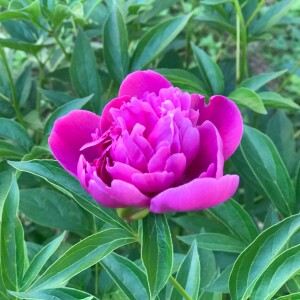
Thursday May 08, 2025
Episode 172: Flower Power Retrospective (Part 2)
Thursday May 08, 2025
Thursday May 08, 2025
Welcome to Part 2 of the Flower Power Retrospective where the conversation on previously aired short segments is focused on how to select, plant and care for all kinds of flowers. Linda Levitt, Master Gardener Volunteer, shares her knowledge and expertise focused on irises, peonies, marigolds, zinnias, and cosmos.
The first segment concentrates on the iris family. These elegant flowers bring late spring or early summer color to your garden with some varieties that actually bloom again in the fall. These rugged, reliable flowers are easy to grow. The 250 to 300 species of irises grow well here in the Hudson Valley. While they tend to be deer resistant, they are great for pollinators and hummingbirds. Learn about the two major groups, those that grow from spreading rhizomes and those grown from bulbs. Irises in the rhizomatous family, which included the popular bearded iris, have multiple flowers on a stem. They are highly adaptable to a wide range of conditions, and a good selection for low maintenance mixed borders. The bulbous irises shed their leaves unlike the rhizome irises that maintain their sword like leaves if unattended. These irises you might find in a spring floral bouquet. This grouping does well in rock gardens and forcing them in pots. Most irises grow in full sun exposure for at least a half a day. Many grow in the shade but most likely will not bloom. They should be planted in late summer to early fall, early enough for the rhizomes to get established and survive over the winter. However, note that if you plant the rhizome and roots too deeply, they will not bloom. Irises do need good drainage. They look great when planted along with roses, peonies, salvias and alliums. Plant Iris is where you can watch the butterflies and hummingbirds.
The second segment features a favorite flower in Hudson Valley gardens, the peony. They are elegant, long-living perennials known for their large, fragrant flowers. Blooming in late spring, they are excellent for cut arrangements. Their flowers come in shades of pink, purple, red, white, and yellow. These plants thrive in sunny spots with well-drained soil and can be stunning, low-maintenance additions to any garden. Learn about the three main types:
- Tree Peonies: Woody shrubs, 4–7 feet tall, hardy in zones 4–9, blooming April–May, with very large flowers.
- Herbaceous Peonies: Die back yearly, hardy in zones 2–8, bloom May–June, long-living (up to 50 years), low maintenance, deer resistant.
- Intersectional (Itoh) Peonies: Hybrid of tree and herbaceous types, hardy in zones 4–9, bloom in June, with big, colorful flowers and strong stems that don’t require staking.
The final segment focuses on three easy to grow annual flowers that bloom all summer. They are marigolds, zinnias, and cosmos. Marigolds are a favorite, no fuss annual, that germinate quickly from seed and will bloom in about eight weeks. They tend not to be a favorite of deer or rabbits, although there's never a guarantee. Marigolds are beneficial in repelling several types of insects, and as such are a great companion in vegetable gardens. They are an excellent choice for live bouquets, growing in containers or planting as a border along sidewalks and driveways due to their high heat tolerance. Zinnias are one of the easiest annuals to grow, offering an explosion of color and shades of orange, pink, purple, red, white, and yellow. They grow quickly and reliably and come in a variety of shapes and sizes. Long strong stems make them excellent for cut flower arrangements.Cosmos are freely flowering plants that are easy to grow from seed, maturing in about two months. They may be considered slow to germinate but it will bloom quickly. The flowers sit atop a long slender stem that comes in a variety of colors and look very much like daisies. All three of these annual plants require full sun exposure and will bloom from late spring until frost, although zinnias tend to be less prolific in the heat of the summer. All three plants attract various pollinators. The marigold plants will attract butterflies, bees, ladybugs and other beneficial insects. Zinnias will attract butterflies and hummingbirds. Cosmos will attract bees, butterflies and birds. These are all easy to grow colorful additions that can be added to your garden each year.
We hope you enjoy this episode and remember, take the time to smell the flowers!
Host: Jean Thomas
Guest: Linda Levitt
Photo By: Teresa Golden
Production Support: Linda Aydlett, Deven Connelly, Teresa Golden, Tim Kennelty, Amy Meadow, Xandra Powers, Annie Scibienski, Jean Thomas
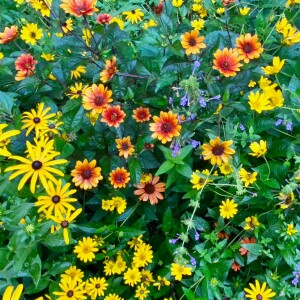
Thursday May 01, 2025
Episode 171: Flower Power Retrospective (Part 1)
Thursday May 01, 2025
Thursday May 01, 2025
Welcome to another Retrospective series consisting of previously aired short segments on similar topics packaged together for easier listening. This retrospective is called Flower Power which is all about how to select, grow and care for a wide range of flowers. Master Gardener Volunteer, Linda Levitt provides lots of practical tips on how to best select, plant, and care for a wide range of flowers.
The first segment focuses on the difference between Annuals, Perennials, and Biennials. Annual plants complete their life cycle, from germination to seed production, in a single growing season and then they die. They tend to have numerous and continuous blooms from spring or early summer until frost and devote more energy to see production than roots when compared to perennials. Some well known annuals include: pansies, marigolds, lantana, super bells, garden mums, Zinnias, alyssum, and nasturtium. Annuals are a great way to experiment. maintain constant color, and refresh your garden year after year. By contrast, perennial plants regrow every spring, but have a shorter blooming period. By contrast, perennial plants will continue to grow each year. Only the top portion of the plant dies annually in the fall, maintaining their growing root system allowing reblooming in the spring. These plants tend not to bloom the first year of their life. Typically a perennial plant has a root system that spreads outwards and deep and will benefit from being divided after a couple of years. Perennials should last at least three years. They have a shorter bloom time than annuals so think about pairing different perennials that bloom at different times during the growing season. And pairing with some annuals for constant color. Perennials can be planted from bulb, seed or plant. Some commonly known perennials are coral bells, purple, coneflower, daffodils, bleeding, heart and daylilies. A biennial plant completes its growth cycle in two seasons but does not bloom until the second year. It drops its seeds after blooming and in two years, you should have new blooms. Some well known examples of biennial plants are poppies, sweet William and foxglove.
In the next segment, Linda talks about the beautiful and versatile Lantana plant. This is an easy care, versatile, and colorful plant that is known for its long bloom season, from late spring to first frost. There are about 150 species within the Verbena family. The plant is considered an annual plant in colder climates and a perennial plant in more tropical environments. Lantana can propagate from seed or stem cuttings and should be planted at least two weeks after the danger of frost. It thrives in hot dry spots, and in all soil types that are well drained, as long as it has enough water to get established. Lantana blooms best in full sun. As an annual it can grow three to four feet tall and one to three feet wide in just one season. Some species can grow upright and tall providing great color in your garden or then can trail, spilling over in a hanging basket or container. The tiny flowers appear in clusters called umbels that are one to two inches across in colors that range from vivid reds and oranges to muted shades of coral, pink and peach and they don't have to be deadheaded. This plant is continuously blooming with foliage that is dark green or variegated, rough, textured and oval in shape. The plants attract pollinators, butterflies, bees and hummingbirds. Some plants to consider using as companion plants include Angelonia, Pentas, sun-loving Coleus, Superbells, Petunias and Salvia. They all have similar growing conditions and will do so well with Lantana. In summary, theyare beautiful, colorful, ever-blooming plants that require little or no maintenance when planted in the right conditions.
This episode concludes with another short segment covering the hellebore, which is called the 'harbinger of spring'. It provides nectar for emerging pollinators when there are so few nectar sources available. Some of the plants are well-known by the names Winter Rose, Christmas Rose or Lenten Rose, but they have no relation to the rose family. These plants are surprisingly frost resistant and some are even evergreen, keeping their color during the winter. Many species are toxic to animals and tend to be deer resistant. They thrive in partial shade, especially at the woodland edge. They will grow in dense shade but may not produce many flowers. However, they have been known to adapt to more light if necessary. Limda recommends that you plant hellebores in moist well-draining soil that has been supplemented with compost. They prefer soil rich in organic material and they will thrive if you plant them under trees, but note that Hellebores do not like hot summer sun. Plant in the spring or early fall as long as the ground is frost free. Once established, the plant will grow about 18 inches high with flowers that consist of five large petals, which are actually sepals, that form to protect the reproductive parts of the plant. For most species, the flowers are drooping and falling downward, so a woodland slope would be an ideal location. Some varieties however, have been bred with upright flowers and are used in spring bouquets. After a few years, a mature plant in the right conditions can produce 50 or more flowers. You should mulch every year in the fall and do allow fallen leaves to act as natural mulch and soil conditioner. Hellebores are hardy, long-loved perennials that if grown in ideal conditions will naturalize and spread. They are tough, cold hardy, deer or rabbit resistant and easy to grow, providing the possibility of evergreen foliage for year round interest.
Host: Jean Thomas
Guest: Linda Levitt
Photo by: Tim Kennelty
Production Support: Linda Aydlett, Deven Connelly, Teresa Golden, Tim Kennelty, Xandra Powers, Annie Scibienski, Jean Thomas
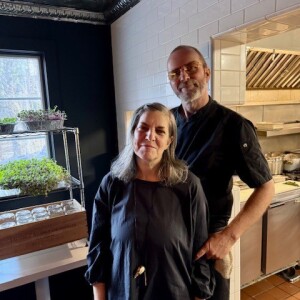
Thursday Apr 24, 2025
Episode 170: Julia's Local (Part 2)
Thursday Apr 24, 2025
Thursday Apr 24, 2025
Learn more about the behind-the-scenes running of a restaurant in Round Top, NY. It's more than just the garden, and the kitchen. Julia Joern, Henning Nordanger, and Dan Hartquis are back on Nature Calls; Conversations from the Hudson Valley to finish their journey to create Julia's Local. There are plenty of business decisions that need to be made to keep a restaurant viable. It started from renovating an old house, that had lots of nooks and crannies, into an inviting place to enjoy a meal. As a non-tipping establishment, they have opted to use this approach to attract and retain a great staff.
Julia's Local grows their own food in their culinary garden located on Blackhead Mountain Road on 1+ acres. Everything is started from seed. With the help of 'Tractor Dan', they have been cultivating the soil since the early summer of 2023. They grow root vegetables, peppers, garlic, kale, spinach, and berry bushes. They even have greenhouses where they grow both heirloom and sun gold tomatoes. Their raised bed gardens are used to grow herbs, nasturtiums, and other edible flowers, as well as the flowers they use on their dining room tables. But that's not all! Their garage houses multiple types of microgreens that thrive under grow lights. Learn where 'Tractor Dan' sources his seeds and how they keep the produce coming all year long.
In addition to the restaurant, they offer some frozen 'small batch' offerings such as soups, stews, pot pies, that can be ordered online. It's a great option when hosting surprise guests and being able to provide them with a delicious meal. Cooking classes are also occasionally offered. So regardless of the season, enjoy learning about what it takes to run a farm-to-table restaurant and take the time to check out this local gem!
Hosts: Tim Kennelty and Jean Thomas
Guests: Henning Nordanger, Julia Joern, Daniel Hartquist, and JD Eiseman
Photo by: Tim Kennelty
Production Support: Linda Aydlett, Deven Connelly, Teresa Golden, Taly Hahn, Tim Kenelty, Amy Meadon, Xandra Powers, Annie Scibienski, Eileen Simpson, Robin Smith

